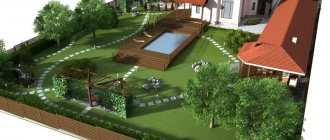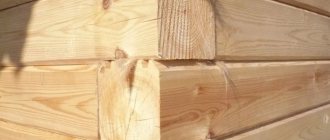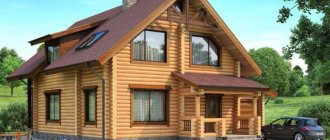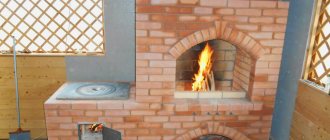- Laws and rules for the location of buildings
- How to take measurements correctly
- Location of the house on the site according to the standards
- Standards for the location of other buildings
- Other requirements and standards for site planning
- Penalties for non-compliance
Before starting active development, each owner needs to study the rules for the location of buildings on a land plot.
This will allow you to subsequently avoid conflicts with neighbors and all kinds of penalties from authorized bodies. Today we will talk about how to properly place structures.
When and why were the standards for indentation from the boundaries of a land plot invented?
Information on how much to retreat from the fence, from the streets, from neighboring plots and erected buildings during the construction of a house is contained in urban planning and norms and regulations (SNIPs, SanPins), and is also enshrined in the law on fire safety. These norms were developed back in the last century for the safety of citizens, when private property did not yet exist. Over time, taking into account the development and development of territories, the norms and rules have changed along with other land legislation. There are sets of rules that regulate the construction of buildings within the city (SP 30-102-99). There are rules that provide for the development and planning of summer cottages (SP 53.13330.2019). Along with these codes, Sanitary Rules were adopted, which indicate the permissible minimum distances from gas pipelines, farms, wastewater treatment plants to individual buildings (SanPin 2.2.1/2.1.1.1200-03), as well as requirements for fire safety clearances (123-FZ dated July 22, 2008 g., as amended from April 30, 2021 No. 117-FZ, SP 4.13130.2013) Let's consider what rules and regulations for minimum setbacks from the boundaries of the site apply when building a house on dacha and garden plots in SNT.
Additional parameters to consider
There are certain ways to circumvent fire safety requirements. For example, if the fencing to the street is strong enough, and the house meets the requirements for the first and second fire safety categories (built of concrete, brick or natural stone), then you can take care of permission from special authorities and reduce it to 2 meters.
If you have permits, there will be no claims against the house even if it is one-story. According to a recent government decree, the responsibility for fire safety falls on the shoulders of the homeowner, and the fire service no longer has anything to do with it.
Rules and regulations
The construction of structures for household needs is also regulated by relevant documents, but sanitary and hygienic standards are also added to them:
- The outbuilding adjacent to the house must certainly have a separate entrance.
- Sheds for poultry and livestock should be located at a distance no closer than 12 m to the neighbor’s house (you will have to calculate at what distance from the neighbor’s fence you can build them, and for this you need to know at what distance from them the neighbor built his house).
What rules of planning and development on dacha plots of SNT apply in 2021
Unfortunately, few people comply with the minimum indentations established by the rules. If you wish, you can find fault with any dacha or garden plot if the owner is not a perfectionist regarding compliance with legal norms. Since land plots accepted for issuance most often have a size of 6 acres, you have to manage to place at least the minimum on such a piece of land: a house, a bathhouse, household items, and not forget about the garden and vegetable garden. So it turns out: somewhere the buildings are located too close to each other, somewhere the trees are planted incorrectly. However, if the violations concern the planting of trees or shrubs, then the situation can be corrected once or twice if dissatisfied neighbors appeal. What if the minimum setbacks from the boundaries of the land plot are not observed when building a cottage or bathhouse? Here the solution to the problem is much more complicated. Let's consider what planning and development rules apply in 2021, how many meters to retreat from the fence during construction.
Penalties for non-compliance
Current legislation provides for penalties for owners who do not comply with these norms and requirements. If they are ignored, penalties may be applied to the person:
- administrative responsibility;
- fines;
- mandatory demolition of structures that do not meet the standards.
Compliance with the rules is not just an obligation, it is an opportunity to develop a site comfortably and safely. Regulations are created to protect people from many problems. By ignoring the rules, you endanger yourself and your loved ones.
The Render House company is engaged in the construction of turnkey cottages in compliance with all norms and requirements. To get advice and choose a project, call the phone number in the site header.
Features of the location of the garage on the land plot
Let's find out how many meters you need to retreat from the fence and other buildings when building a garage. Garages for cars can be either separate buildings or built-in or attached to a house, cottage or other buildings located on a garden plot.
Here it should be understood that if the garage is detached and one-story, then it is enough to retreat 1 meter from the neighboring fence for construction (taking into account the slope of the roof so that waste water does not fall into the neighboring area. If the garage is an extension of the house, then 3 meters are retreated from the house, and from the garage - 1 meter.
According to the new rules of 2021, it is allowed to place a garage (carport, or parking lot) adjacent to the site on the side of the street or driveway, in agreement with the SNT board.
Fences and enclosures
Fences and permanent fences are mandatory structures in dachas and areas of country houses intended for year-round use.
Purpose of the fence:
- prevents unauthorized entry of strangers into private territory;
- ensures privacy - closes the yard from prying eyes;
- acts as a decorative component of the landscape;
- protects from street noise and dust;
- indicates the boundaries of the site.
Fences around a private plot should be installed taking into account the recommendations and standards specified in SNiP. Requirements for:
- Fences built on the front side. Fences that are installed along the front side of the site are recommended to be no more than two meters high and have a translucency of at least 40%. This is not a rule, but a recommendation, which is why in dachas and in the private sector you can most often see solid fences more than two meters high. However, you must remember that if the administration receives a complaint about a fence that does not meet the standards, the SNT board has the right to require you to replace the fence or reduce its height.
- Adjacent hedges. According to the established law, the fence that runs between two adjacent dachas must ensure insolation and free air circulation, and its height should not exceed one and a half meters. Since a blind high fence provides a continuous shadow, translucent building materials should be used to install it.
It must be remembered that fences made of sheet iron become very hot in the direct rays of the sun and heat the air around them, which has a detrimental effect on plants planted next to the boundary. It is recommended to install wooden fences, sectional fences made of corrugated pipe, and roll-up fences made of chain-link mesh between areas.
Is it possible to register a house if the property line is less than 3 meters away?
We found out from the cadastral engineers what the situation is with cadastral registration if the setbacks from the boundaries of the land plot are not observed. Rosreestr, when registering real estate, was previously quite loyal to non-compliance with borders; no one checked them. However, the rules are changing and in 2021 registration is often suspended. Then the owner goes to court to register the building.
Requirements for gardening partnerships
The abbreviated name is SNT. Their development is regulated by SNiP 02.30.97. However, such non-profit organizations often have their own charter, approved by the competent services. In some cases, it is even possible to leave areas without a fence.
The height of the street fence in garden associations should not exceed 2.5 m. There are no restrictions on the materials.
The adjacent fence is made of translucent elements at a height of up to 2 m. Moving it unilaterally is prohibited.
If outbuildings on two plots are located quite close, then with the permission of the neighbors it is allowed to go slightly into the neighbor’s territory. However, this should not become the reason for blocking the passage for residents, the passage of transport, or blocking access to communications.
Since the fence is not installed for one year, any changes or agreements should be recorded in writing and notarized.
Neighbor violated building codes - where to complain?
There are cases when neighbors place their buildings close to the fence, snow rolls off their roofs onto the property, and the shadow blocks the light from the plants. How to deal with this? First, you should try to resolve disagreements with your neighbors amicably. Explain what exactly is stopping you and ask to eliminate the shortcomings. But, alas, sometimes it doesn’t work out that way. Then there are two options:
- Filing a complaint with local authorities regarding non-compliance with urban planning standards. If, as a result of such an appeal, the problem cannot be solved, the most effective method remains - the court.
- Statement of claim to the judicial authorities. However, when filing a complaint, keep in mind that neighbors may follow the principle and file a counterclaim - complaining about the location of your buildings.
In addition, court costs and expenses have not been waived. You must be prepared to spend money and time to defend your rights. Many standards are advisory in nature. Before going to court to protect your rights, you should competently draw up a statement of claim, and to do this, seek the help of a lawyer. All complaints must be substantiated and documented.
What to consider before planning
The lever regulating the development of the private sector is SNiP - building codes and regulations. They regulate the planning sequence and the process of drawing up project documentation.
It is worth highlighting:
- SNiP 02/31/2001 – creation of a project for a residential and non-residential building;
- SNiP 02.30.97 – construction of country cottages;
- SNiP 11.03.99 – for individual housing construction;
- SP (set of rules) 11.106.97 – site planning.
Important provisions relating to individual housing construction are spelled out in the Town Planning Code. Based on the recommendations of the legislation, it is necessary to make a decision on the type of construction of the building, auxiliary structures and their placement on the territory.
Why is all this needed?
All the norms discussed above look quite strict. In many cases, their literal implementation is simply impossible - due to the small area of the land plot or its incorrect configuration. Try to place a modern house, a shed for equipment, several apple trees, a gazebo, bushes, a shower and a toilet in full compliance with the standards on a six-acre site, especially if it is narrow and elongated. Namely, such areas are often cut up due to a basic shortage of land.
In such cases, construction is still possible, but all details must be agreed upon with local authorities. Or, as an option, come to terms with the fact that you will have to give up your dream of a nice, spacious two-story cottage.
And, of course, the interests of neighbors must be taken into account, otherwise conflicts may arise due to improper placement of buildings. Here are just a few reasons for such “friction”:
- the fence is too high and blind, shading part of the territory;
- a thick fence occupies part of the neighbors’ territory, which is already small;
- a large house shades the territory of the neighboring plot.
It is worth remembering that the requirements and standards of SNiP and GOST were developed solely for reasons of fire and sanitary safety. To avoid such conflicts, which often lead to litigation, it is enough to simply try to follow all the existing rules.
Did you find this article helpful? Please share it on social networks: Don't forget to bookmark the Nedvio website. We talk about construction, renovation, and country real estate in an interesting, useful and understandable way.
How to place plants inside the yard
The garden is the main attribute of a country house, no matter how large or small the plot is, there is always a certain number of trees and shrubs. It’s good if their placement is planned during construction, then the yard, house, household elements and garden are created in a single, thoughtful style.
If the location of beds and flower beds can be changed at least every year, and shrubs can also be changed periodically, then the location of the trees must be determined carefully - uprooting an adult tree is much more difficult than planting it. In addition to legal standards for the placement of plantings, one should also take into account the need of a particular garden crop for sunlight and its resistance to temperature conditions.
Permitted distances for placing plants in the yard
There is no standard advice for all areas, it all depends on the region, landscape, area, desired number and variety of plantings, but there is one general rule. The shortest plants are planted on the southern side of the site, and moving towards the north, their height increases. Among the design solutions for garden design, there are two main ones: geometric and landscape.
A geometric or regular layout option involves planting trees, shrubs and flowers on strictly measured lines, at the same distance from each other.
In this case, it is assumed that smooth parallel and perpendicular paths will be created. Trees are placed opposite each other or in a checkerboard pattern. On a site with a slope, planting lines are arranged in transverse rows. The landscape or free planting option leaves the right to plant trees and other plantings in various parts of the site.
This option allows you to create a wide variety of territory design options, alternating plantings with buildings, decorative details with flowers. This planting method is especially suitable for uneven areas with depressions and hills, and allows you to turn the disadvantages of the territory into wonderful advantages. Return to contents
Distance to green spaces
Since the land plot can contain not only buildings, but also green spaces, there are regulations for this case too. Leaving a gap between the fence of the site and flower beds is not as important as between trees and bushes. Here, too, it is necessary to comply with the rules in order to avoid penalties and claims from neighbors with possible litigation.
Distance to trees
Tall trees growing close to the border of two plots of land are another subject of dispute between neighbors. To avoid legal disputes with residents of neighboring houses on this basis, maintain the recommended interval of 2 meters between medium-sized trees and the fence, and 4 meters if the trees are tall. The distance is calculated from the center of the trunk.
You need to maintain a distance not only from buildings, but also from trees to the fence
How to understand which trees grow on the site - medium-sized or tall? This is not stated in the laws, however, there is an unspoken rule - tall trees with a height of more than three meters. There are no restrictions or additions depending on the type of tree - apple trees, cherry plums, birches, tall pines, as well as wild or exotic trees can grow at the permitted distance.
Distance to bushes
The minimum gap between shrubs and the fence at the border of the site is 1 meter. The distance regarding flower beds and flower beds is not mentioned at all in the building rules and regulations. This means that you can plant flowers even close to the fence - this is legal. As with trees, there are no restrictions on the types of shrubs - the main thing is to keep your distance.
Required documents
Permits are required to build a house
After the owner of the site collects all the necessary documents and submits them to the administration, he must be issued a building permit. Now you can start drawing up a project passport for a private residential building. It includes:
- Construction permit.
- Right to land.
- General plan of the site.
- Situational plan.
- Layout of floors and facades.
- And many other documents.
It is also necessary to draw up a project for a private house. Here you need a situational plan, a plan of the basement, floors, roof truss system, roofing and others. You also need engineering drawings, an explanatory note, and financial estimates.
Negotiating with neighbors
Below is a step-by-step strategy for negotiating with neighboring property owners.
- Agree on a plan with your neighbors. In cases where you plan to install a fence in the front or rear of the site, such approvals are not required. Only fences that run along the boundaries of neighboring plots are subject to approval.
- Set the boundaries of the site and the consumption of material. Clearly define the border where your territory ends according to the documents you have, so that if something happens, you can meet all the claims of your neighbors fully armed. Also pre-calculate how much materials you will need for construction. This will help you not to be distracted by extraneous issues when building a fence.
- Tell your neighbors that you are planning to build a fence. It is not necessary to notify them at the official level; it is enough to tell them about it at the meeting. Do not forget to clarify all the features of the future fence, especially if you think that the neighbors may be unhappy with the chosen type of fencing.
- Go to dialogue. If your neighbors have any complaints about the height or type of your fence, try to resolve all issues peacefully. Small details may be insignificant, but they can seriously ruin a relationship.
- Be respectful of the interests of other people, and then they will respond to you in kind.
How mandatory is it to comply with all standards?
The rules for placing buildings on your own site can be divided into mandatory, recommendatory and just advice. Mandatory standards include those adopted by law, standards for the setback of buildings and plantings from the red line, the neighboring fence, the placement of buildings in relation to wells, barnyards, power lines, both within the site and between buildings in neighboring territories.
The distance between buildings is also regulated, which allows for fire safety. Recommended requirements include recommendations on the maximum area of buildings on the site, number of storeys, engineering equipment, height and materials of the fence.
Each local urban planning authority can put forward its recommendations regarding the placement of buildings, the width of the site, the height of the fence, which will not allow a separate site to spoil the overall picture of the architectural style of a certain area.
There is no need to be afraid of many requirements and recommendations, you just need to think carefully about everything, do not break the law, it is better to fulfill the mandatory conditions, and protect yourself from lawsuits and misunderstandings with neighbors and municipal authorities. Try to apply the recommendations to your conditions and create an atmosphere of comfort and well-being on the site.
Do you need to follow the rules?
The norms of SP, SNiP and SanPiN were not invented so as to ensure that they are observed. For neglect of instructions, administrative liability is provided, which is regulated by Art. 9.4 of the Administrative Code of the Russian Federation. The first time the offender will receive a verbal warning. If it is not eliminated, a fine of 1 to 2 thousand rubles will be issued.
More serious sanctions will follow if it is proven that disregard for the rules has caused harm to nature or neighbors. The first time the offender faces a doubled fine, that is, from 2 to 4 thousand rubles. Repeated violation is punishable by an even larger fine of up to 5 thousand rubles. Litigation over non-compliance with the distance to the fence is not uncommon.
It is noteworthy that establishing the fact of non-compliance with the minimum distance between a house, building or tree and a fence is not yet a reason to force the violator to solve the problem. Demolition, relocation of a building or removal of green spaces can only be achieved through the courts. However, the best option is to maintain a distance from the house to the fence and avoid conflicts.











